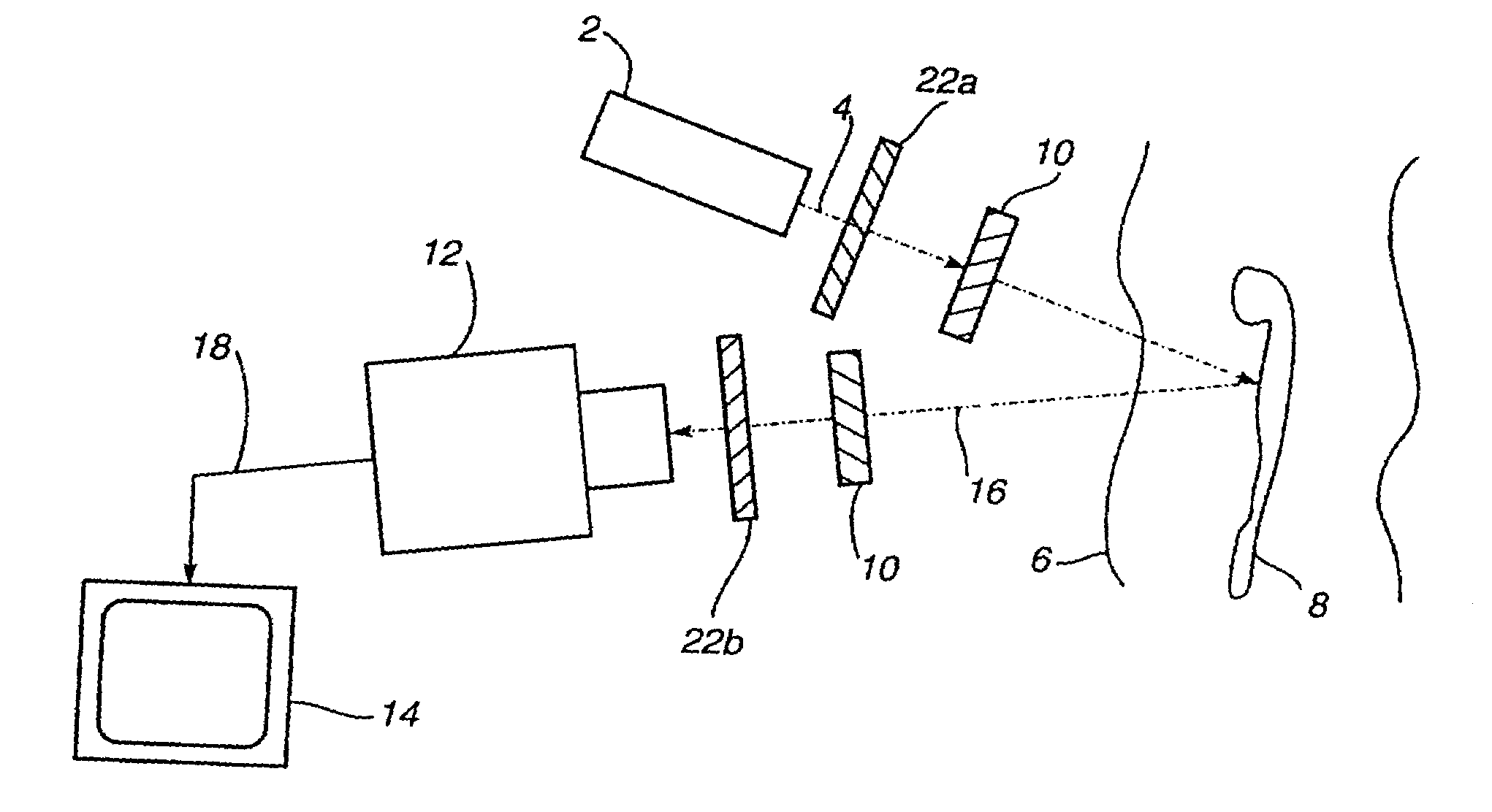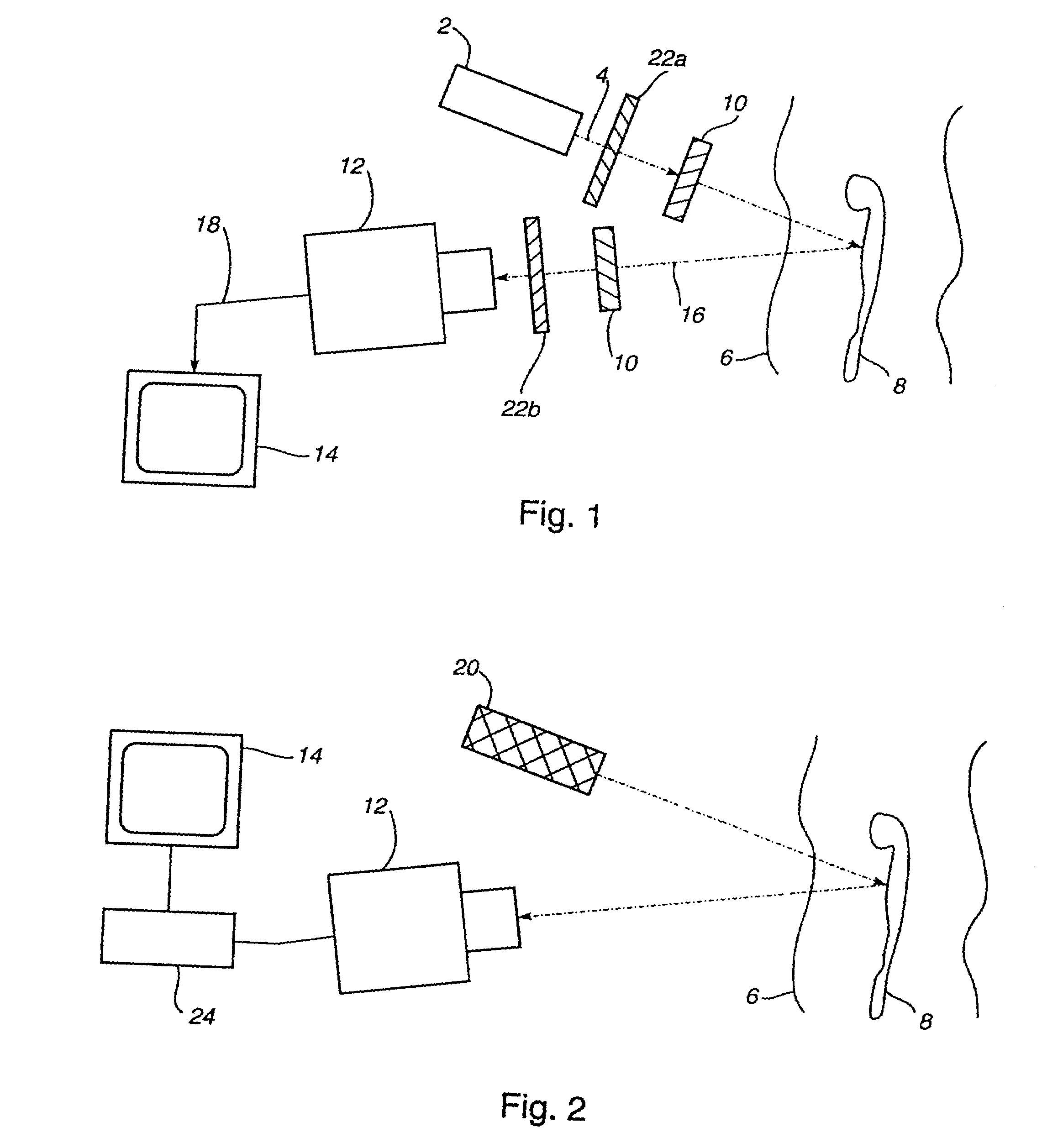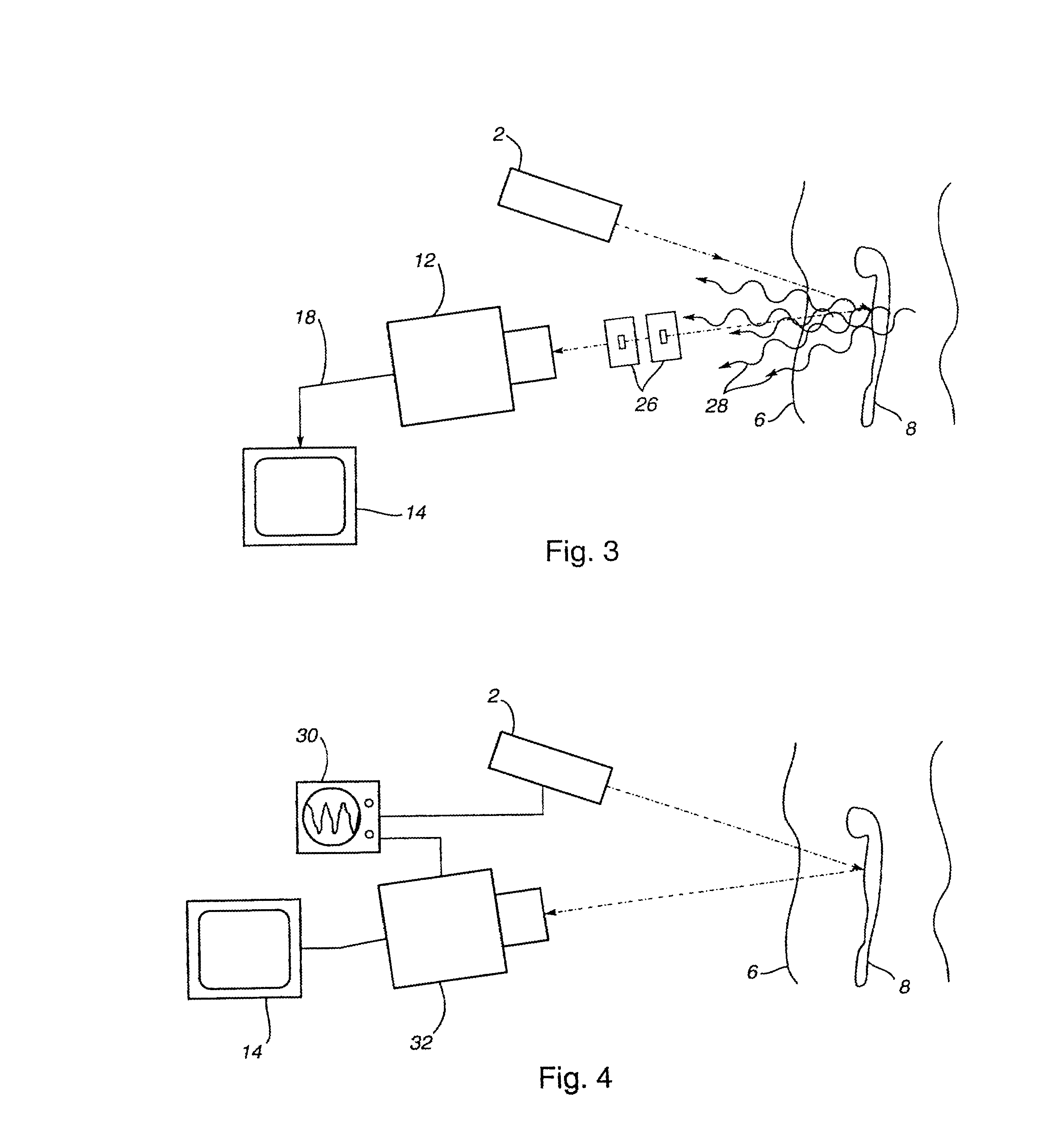Method and apparatus for detecting electro-magnetic reflection from biological tissue
a biological tissue and electromagnetic reflection technology, applied in the field of biological tissue system and method for locating anatomical structures, can solve the problems of delayed placement of intravenous lines, high morbidity associated with multiple venipunctures, and often the rate-limiting step of intravenous compounds, and achieve high contrast
- Summary
- Abstract
- Description
- Claims
- Application Information
AI Technical Summary
Benefits of technology
Problems solved by technology
Method used
Image
Examples
Embodiment Construction
[0020]The present invention provides a system for locating an anatomical structure, such as a blood vessel, wherein the system comprises a light source and an image detector, which detects light radiation reflected from the area of examination, and a monitor which receives and displays image information from said image detector. The term “light source” includes but is not limited to polychromatic sources, such as white light sources, as well as monochromatic sources such as laser light sources. The term “image detector” refers to any device capable of detecting light, including but not limited to charge-coupled device infrared cameras (CCD's), video cameras, and liquid crystal television detectors.
[0021]Optionally, the present invention may include elements that enhance the contrast between the anatomical structure and the surrounding tissue in the image. The term “contrast enhancing element” refers to any element or combination of elements which enhance contrast between the anatomi...
PUM
| Property | Measurement | Unit |
|---|---|---|
| wavelength | aaaaa | aaaaa |
| wavelengths | aaaaa | aaaaa |
| wavelengths | aaaaa | aaaaa |
Abstract
Description
Claims
Application Information
 Login to View More
Login to View More - R&D
- Intellectual Property
- Life Sciences
- Materials
- Tech Scout
- Unparalleled Data Quality
- Higher Quality Content
- 60% Fewer Hallucinations
Browse by: Latest US Patents, China's latest patents, Technical Efficacy Thesaurus, Application Domain, Technology Topic, Popular Technical Reports.
© 2025 PatSnap. All rights reserved.Legal|Privacy policy|Modern Slavery Act Transparency Statement|Sitemap|About US| Contact US: help@patsnap.com



